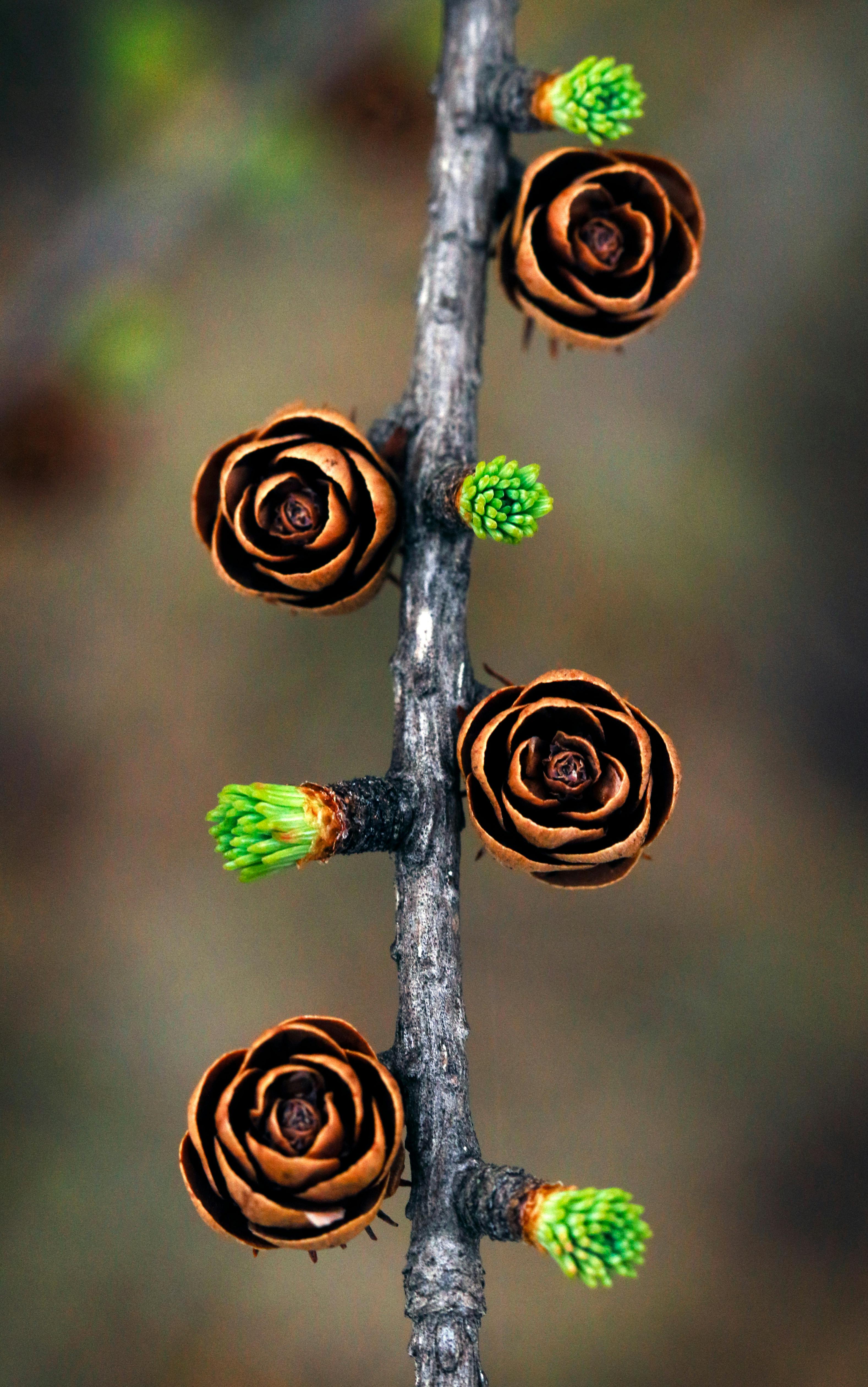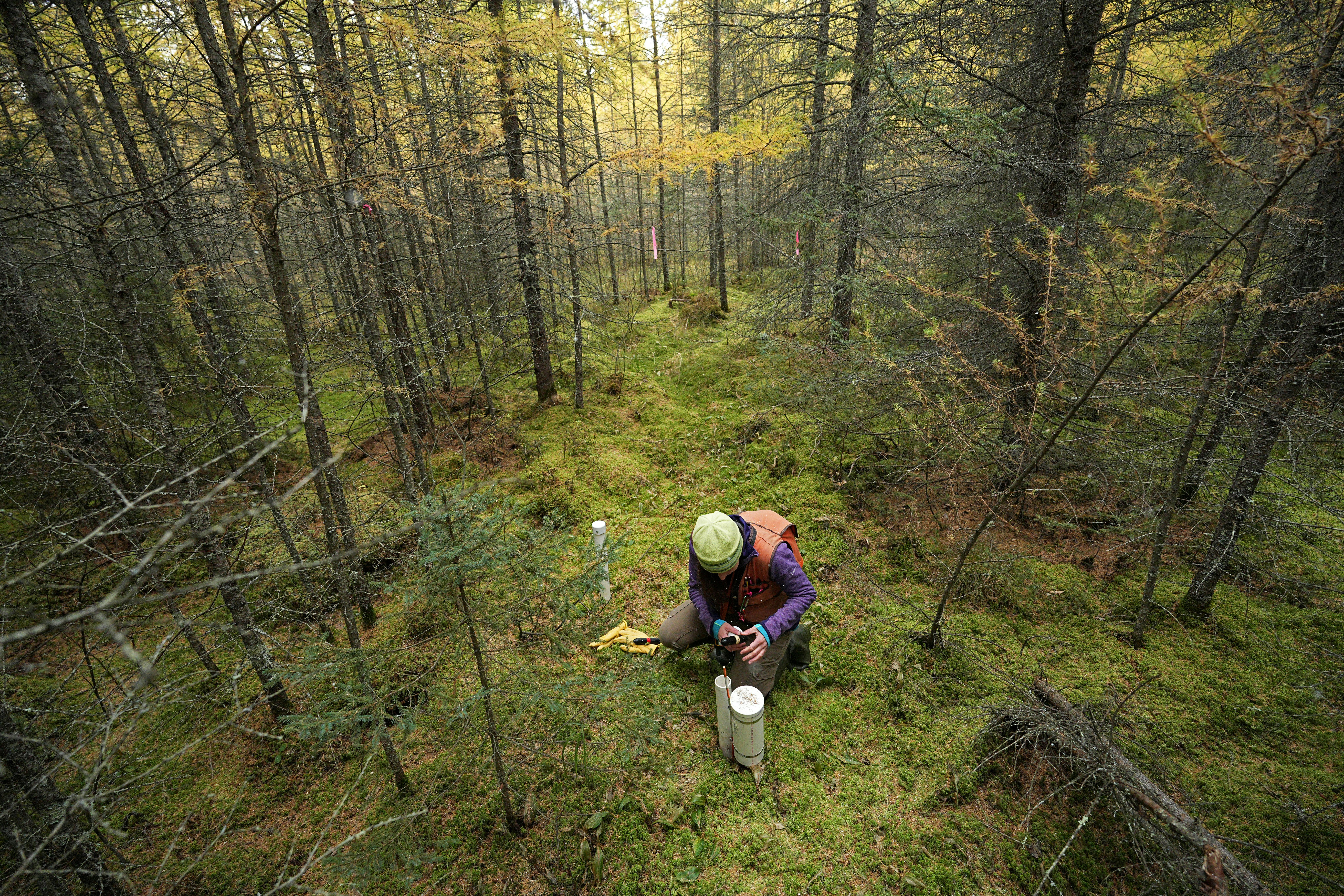Vanishing North
An occasional series in the Star Tribune documenting the biodiversity crisis and the people struggling to head off extinction for Minnesota’s most vulnerable animals and plants.
In the early spring, just as tender needles emerge on tamarack trees across Minnesota, the beetles wake up and start to eat.
At first, it is almost impossible to tell if a tamarack tree is infested. Its needles still bud to a healthy green. But tiny holes in the bark reveal where the eastern larch beetles burrowed inside. The tree might try to push the invaders out of the holes with an oozy sap-like substance called resin.
It becomes more obvious in the summer, especially if needles start to yellow early. Woodpeckers flock to the infested trees, stripping them of bark.
Eastern larch beetles and tamaracks have coexisted in Minnesota for about 14,000 years, following the glaciers as they retreated.
But in the early 2000s, something upset the balance. Trees that had never been bothered by the insects before suddenly could not fight them off. Millions of trees succumbed to the bugs' 20-year feast.
The first to go were the tallest and oldest trees. When those were gone, the beetles moved on to the mid-sized trees that make up the bulk of Minnesota's tamarack population. When those are all eaten up, the beetles may turn to the youngest trees — a potential death knell for tamaracks in Minnesota.
Marcella Windmuller-Campione, a silviculturist at the University of Minnesota, has been trying to make sense of the tamarack's sudden collapse in the state and its potential for growing back.
"There's something so sweet and gentle about this tree," she said. "But it lives in these really harsh environments, in conditions that are flooded and acidic and buggy and mucky."
Among the toughest things ever to grow in Minnesota, tamaracks thrive in the cold, and survive with their pencil-straight trunks all the way up the Arctic's tundra line. Also known as larches, they grow in deep swamps, marshes and bogs where the soil won't support most other species.


It is unclear now if they can survive a changed climate.
Outbreaks of eastern larch beetles have always occurred, but the bug was rarely considered a pest or even a nuisance. It's a native insect and found everywhere that tamarack trees are found.
Until recently, the bugs mostly fed upon trees that were already stressed by something else — drought, floods or disease.
The beetles survive winter by burrowing under the bark of a tree. They emerge in spring and fly to a new host tree, where they gnaw their way inside. Once under the bark, the females will emit pheromones to attract mates, which takes just a day or two. They eat the tree's phloem — the tissue that transports food — and lay eggs in their own tunnels.
Healthy tamaracks can use resin to fight off one mating pair of beetles. Even a few pairs, said Windmuller-Campione. But when too many are inside, there is no defense. The infestation cuts off the tree's circulation, killing it.
In the past, after laying their eggs, adult beetles would fly off to find a new host tree that summer, while their offspring stayed put. If they survived the winter, they emerged the next spring as mature adults to fly and lay their own eggs and repeat the cycle.
Starting about 2001, Minnesota's growing season became just long enough to give the young beetles a little more time to develop. They started to fully mature into reproducing adults in their first year of life. Multiple generations of the beetle are now being born each year, spreading their reach far wider than ever before, attacking host trees, eating their vital tissue and laying eggs that cut off their circulation. The trees can't fight them off.
Before European settlement, tamaracks were the most common tree in Minnesota, spreading across some 6 million acres.

Their ever-so-straight trunks made them ideal for railroad ties and telephone poles. They were quickly cleared out of the uplands that cover most of the state, where they never grew back. They survived in the lowland swamps and peatlands, where logging is much more difficult and can only happen when the ground is frozen.
Before the outbreak, there were about 1.4 million acres of tamaracks left. The beetles have partially or completely devoured 800,000 — leaving some 600,000 acres intact.
If the tamaracks don't survive, much of the state's peatland forests could turn to grassy marshes or open bogs. That would, in turn, spell trouble for the songbirds, woodpeckers and rare owls that rely on tamaracks for shelter.
It would change the water table in ways that scientists are only beginning to understand, Windmuller-Campione said.
"Things are changing so rapidly, we're really just starting to try to figure out what this means for transpiration and water storage and a whole host of species," she said.
Tamaracks are mostly thought of as northern trees, but small pockets of them survive as far south as Illinois and Indiana. Their versatility gives them hope.
It is counterintuitive, but a larger timber harvest could potentially help tamaracks. The Minnesota Department of Natural Resources hopes that if loggers could thin out some stands — preemptively cutting weakened trees and creating space for young saplings — it could help limit outbreaks and nurture the next generation.
But there is little need today for new tamarack railroad ties or telephone poles.
Some tamarack is still used for pulpwood, but their swampy home typically keeps loggers away. About half of tamarack logging rights the state has put up for sale have gone unsold.
In some of the boglands south of Grand Rapids and west of Duluth, the die-offs have been massive. The bare and dead husks of the trees left by the beetles look like the aftermath of a great wildfire.
Still, young trees continue to sprout. They take root in the acidic soil, and out of that bitterness they produce a needle that's soft to the touch. They're one of the only coniferous species in the world that changes color in the fall.
And in late October, amid the dull gray of the ravaged trees around them, the survivors still glow, shedding a brilliant gold like candles.
Share your story
Please share feedback, questions and suggestions by using the form below. Our reporters will not share your information without your permission. Thank you.